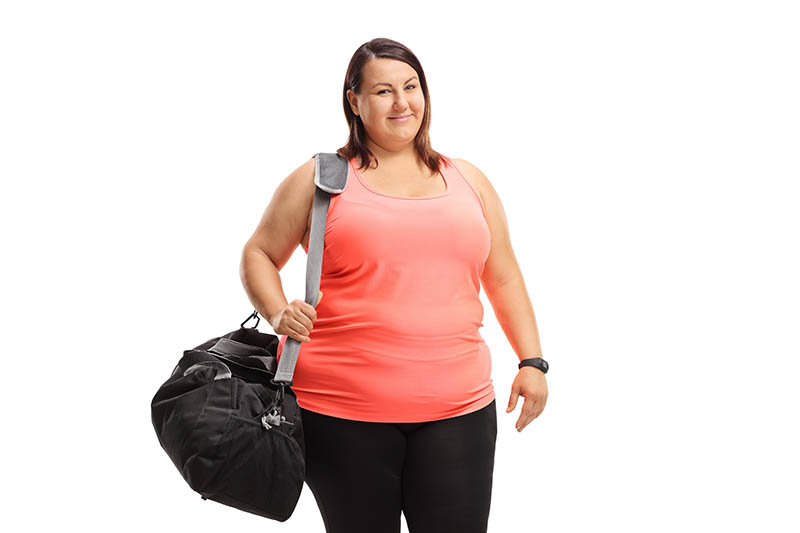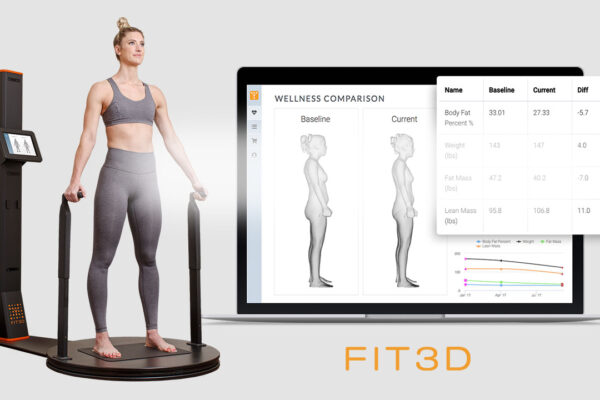Having been overweight (and obese) ourselves, the LLRx team understands that most people don’t need a machine or a test to tell them if they’re overweight. We see it in the mirror, we feel it in our clothes, and the scale makes it known at every trip to the doctor’s office. You might be comfortable with the size and shape of your body or maybe you’re ready for a change and think you should hold off before investing in your body. We’ve been there. We get it. But we talk to countless clients who say the same thing we do – they wish they’d come in for a DEXA scan at the beginning of their health and transformation journey instead of at the end.
So, whether you’re just getting started, renewing your commitment to your health, or you’re nearing the end of a hard-earned body transformation, here are six reasons to get a DEXA scan that have nothing to do with the shape or size of your body.
- Establish a Baseline
Your first DEXA scan is considered your baseline scan. A baseline scan lets you know exactly where you’re starting, and you’ll be able to compare your latest scan to your baseline to see how far you’ve come. As a matter of fact, we’ll show your scans side-by-side to make the visual comparison simple and to keep you motivated. We hear from clients every day who wish they’d done their first scan at the beginning of their transformation journey instead of near the end. - Make Sure Your Program Works
New nutrition program? New workout plan? Your scale might show progress, or it might not. And even worse, it might mislead you to believe you’re seeing progress while really you’re losing hard-earned muscle! The only way to know whether you’re really achieving the results you want from the changes you implement is to measure them. It takes about four weeks for changes to your nutrition or exercise programs for your body to show a demonstrable response. Repeating your DEXA scan 6-8 weeks after changing your nutrition or exercise lets you come validate that your hard work is bringing you closer to your goal. If its not, then your results will give you valuable insight into how you might change your approach to keep moving forward. - Fuel Your Body Properly
On-line calculators and coaches take a “one size fits all” approach to estimating how many calories you need, and most of the time they’re wrong. Your DEXA scan report will give you the exact information you need to build your own personalized nutrition plan. As a matter of fact, we’ve made this even simpler by creating a Macro Calculator that actually lets you plug in your numbers from your test results! And if you’re not ready to learn to create your own personalized plan today, then our certified nutritionist can use your results to help you get started while you learn the basics. - Check Your Bone Health
The DEXA machine is a bone densitometer and it was created for bone density testing in clinical settings. For over a decade, the technology has been used to accurately measure body composition, which includes measuring your bone mineral content. Your DEXA results will show you how much body fat and muscle tissue you have but it will also measure your bone mass. While this is for informational purposes only and should not be used in lieu of your physician’s advice, your bone density screening will give you insight into the health of your bones and might alert you to speak with your medical care provider. - Understand Your Health Risks
Every body has different kinds of fats and each type of fat serves a different purpose. Essential fat is a type of fat that our bodies require to stay alive. This type of fat is found in the brain, the coating of the nerves, and in bone marrow and it plays an important role in healthy body function. When we talk about body fat, most people think of subcutaneous fat. Subcutaneous means under the skin, so subcutaneous fat refers to the type of soft body fat that is distributed throughout our bodies just under the skin. It can change the shape and size of a body and most of us know when we’re carrying too much subcutaneous fat. But what about visceral fat? Visceral fat is a hard, dangerous type of fat found inside your abdominal wall that coats your organs like your pancreas, kidneys, stomach, and intestines. A person can have a healthy weight and a slim build while still carrying excess visceral fat. High visceral fat levels increase your risk of heart disease, diabetes, stroke, and even some cancers no matter what shape you’re in. Your DEXA scan will show you exactly how much visceral fat you have and will help you understand whether you have more than is healthy. Not only that, but when you repeat your scan, we’ll show you how your level of visceral fat has changed so you can watch your health improve over time!
Safety First!
One of the most interesting parts of DEXA scan results is the symmetry report. Your DEXA scan results will show whether you have more muscle on one side of your body than on the other. We can usually guess which hand you write with just by looking at your muscle symmetry! But why does this matter? A small amount of asymmetry can be normal, but significant asymmetry can change the way you move your body. It can impact your gait when you walk or run, it can affect your posture, and it can create imbalance in your lifting form in the gym. All of these changes can leave you prone to injury, injuries that require healing and potential muscle loss (and even further muscle asymmetry!) during recovery. By identifying where you have imbalances, you can adjust your training program or work with a personal trainer or physical therapist to improve your muscle symmetry and protect yourself from sports injuries!





Recent Comments